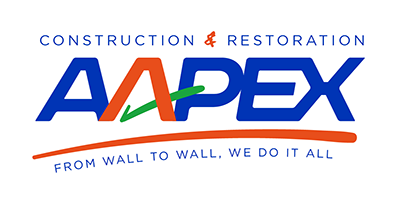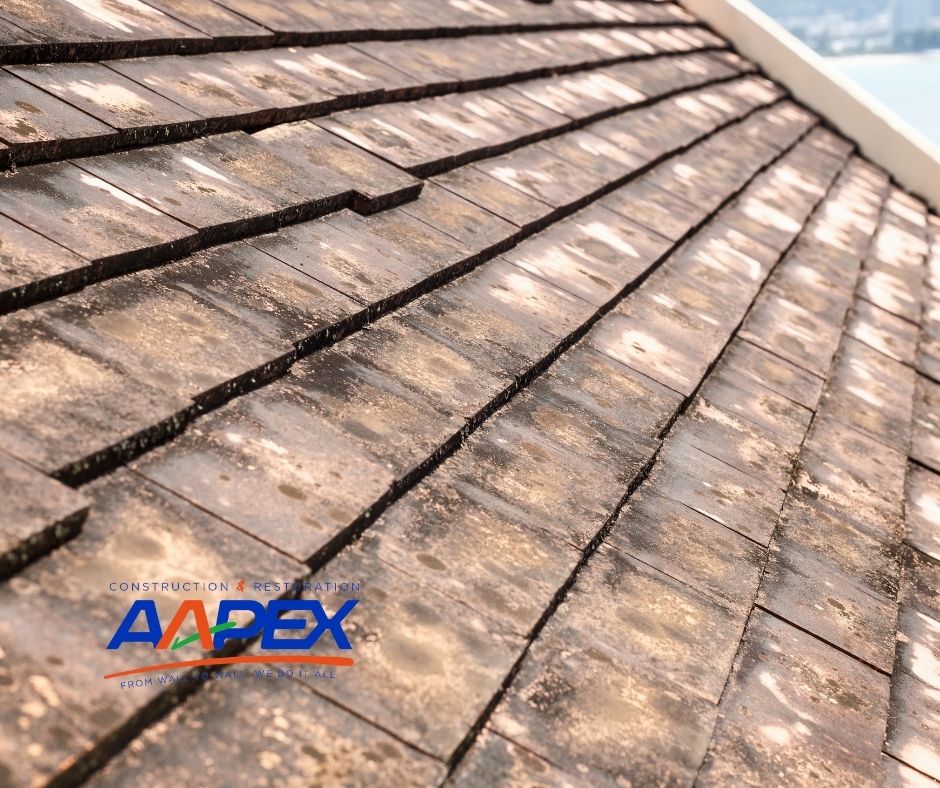When homeowners step back and take stock of their home, one of the most aggravating sights to see are black steaks on the roof. While they may look like dirt or perhaps even mold, those streaks are actually a form of roof algae. In this article, we’ll explore where that algae comes from, how it affects your roof, and the best (and worst) methods for getting rid of it.
What Causes Algae to Form on Roof Shingles?

The most common form of roof algae is blue green algae known as gleocapsa magma. Similar to mold, algae spores travel through the air, carried by the wind or even on the feathers and fur of animals who scamper across your roof. Because it is carried by the wind, roof algae spread pretty easily from house to house, and roof to roof. When algae spores land on your roof, if they find a welcoming environment, they’ll settle in and begin growing into a full-fledged colony of algae. Gleocapsa feed on the limestone within asphalt shingles and begin as small spots that grow into visible streaks. By the time a homeowner notices black streaks, the roof algae have probably already been present for at least a couple months. While roof algae can grow on all types of roofing material, it is most commonly found on asphalt roofs.
Welcoming Weather for Roof Algae

Roof algae thrive in warm, humid climates, like those found in the eastern half of the US as well as the Pacific Northwest. More prominent around the coastal regions, gleocapsa is still common in the Midwest and New England area due to these regions’ hot, humid summers. Because the sun keeps the southern facing roof dry, black algae streaks typically appear on the shaded northern facing sides of the house, where moisture can accumulate on the shingles and give the algae a welcome home.
Draining Gutters & Overhanging Trees
Gutters that drain directly onto the roof as well as overhanging trees contribute significantly to roof algae growth. Like mold, algae thrive in moist, shady areas. Gutters draining onto the roof will keep the shingles damp, and the shade from the overhanging trees will prevent the sun from drying out the shingles.
Is Algae Bad for My Roof?

Roof algae is not toxic to humans or animals, and it is not overly harmful to your roof. However, as it eats away at the limestone in your shingles, it can over time cause the protective UV granules covering the shingles to begin to come off. Left long enough, this will allow the shingles to dry out and can shorten the life of your roof. In addition to this, algae thrive in an environment that is also ideal for mold growth. Mold can combine with the algae growing on your roof to form lichen. Lichen is a sort of symbiotic growth formation of algae and fungus. The fungus provides food to the algae by dissolving the surface on which it’s growing, while the algae provide energy through photosynthesis. Lichen can be the precursor to moss growing on your roof, which will actually create a small layer of soil that seeds can take root in. Once your roof reaches this stage, your shingles (and possibly the roof decking) will need to be replaced. While roof algae, on its own, is not necessarily bad for your roof, left unchecked, it can lead to serious damage.
How Do I Get Rid of Roof Algae?

The most common mistake people make when they discover black streaks on their roof is to power wash the shingles in an attempt to get rid of what looks like dirt. Not only
does this do little to remove the algae, it also does extreme damage to the asphalt shingles. Aapex Construction & Restoration strongly advises against ever power washing your roof. Instead, gently cleaning the roof with a solution of bleach and/or trisodium phosphate (TSP) and water will effectively kill the algae and restore the shingles. Before cleaning the roof yourself, be sure to check that doing so will not void your roof’s warranty of impact your homeowners insurance policy. Also make sure to protect your landscaping by spraying down any plants around the foundation with water prior to applying the cleaning solution to your roof’s shingles.
Preventing Roof Algae
Most shingles are coated with a protective layer that helps prevent algae growth in the first 10 years or so. Once exposure to the elements wears this coating away, algae will be more prone to taking up residence on your roof. If you live in a climate that favors algae growth, you cannot entirely prevent it. However, you can keep ahead of it by trimming back overhanging trees and maintaining your gutters and downspouts to ensure water drains quickly off your roof. Another common preventative measure is installing copper or zinc strips under the shingles closest to the peak of the roof. Rainwater washing down over these strips will carry microscopic amounts of these metals to destroy any algae that may be lurking on your shingles. When it is time to replace your roof, you might also consider opting for shingles that contain copper, which will help limit algae growth.
If you are concerned about black streaks on your roof, scheduling a consultation with a licensed roofing contractor is the best way to assess any potential damage your shingles may have. We are a locally owned restoration company specializing in both commercial and residential projects. Our team has more than 20 years of experience in the industry, providing exceptional workmanship and stellar customer service. Contact us to schedule your consultation today!
Related Articles
The Causes of Roof Ice Dams and How to Prevent Them
Built to Last: The Life Expectancy of 5 Popular Roofing Materials


